Thanksgiving is a holiday where a HUGE meal is cooked for the entire family (and extended family in some cases). One of the best aspects of Thanksgiving meal is the 'left overs' for additional meals. The thought of excess food started getting me thinking about 'food insecurity' -- those who are without food periodically. The number is staggering. I decided to tally up the total number of Turkey's distributed (sold) throughout the United States and calculate the number of possible people that could be fed. Finally, I wanted to know how does that number compare to those who are 'food insecure'. Below are the calculations and results.
How Many Turkey's Are Sold In U.S.?
Considering that the Thanksgiving meal is composed of many parts (mash potatoes, cranberry sauce, green bean casserole, stuffing, etc.), I decided to restrict my line of questioning only to the Turkey component. Which means, the total amount of Turkeys will only be counted in the following blog post -- neglecting all other components of the meal. Therefore, the numbers will be even larger (the result) when considering the other components of the Thanksgiving meal.
As I mentioned earlier, I was interested in figuring out the number of Turkey's that are sold in the United States for Thanksgiving. To do so, I typed into a search engine the following question: How Many Turkeys Are Consumed On Thanksgiving? The answer is shown below:
Wow! 46 million Turkeys will be cooked and cut open to feed people today. In order to make the calculations more easily accomplished and for clarity, the number will be expressed into 'scientific notation' as follows:
That is a large amount of Turkeys which will be consumed at the dinner table in the United States . Usually, there are 'leftovers' of excess Turkey in a given household -- i.e., each of us buy and cook too much Turkey for a given household. I started wondering how many people could be fed with the total number of Turkeys consumed on Thanksgiving day. The answer to this question will be 'a
range' not a single calculated number -- since Turkey's vary in weight -- i.e. not all Turkeys weigh the same. Therefore, different weights will provide different amounts of Turkey for Thanksgiving dinner (or lunch).
Let's get started with this analysis...To arrive at an answer, another question needs to be determined -- "How Much Turkey Is Consumed By A Single Person?" If the following question is entered into a search engine: How Many People Can A Single Turkey Feed? The answer is shown below:
As I mentioned above, the answer should be a range instead of a single number. If the first link is chosen, the following general statement is obtained regarding the average amount of Turkey which is consumed by each person sitting at the dinner table is shown below:
Each person will eat on average around a pound of Turkey. Good. Next, Turkeys vary in weight overall. Therefore, another question needed to be asked to "Google": What Is The Average Weight Of A Turkey? The answer is shown below:
The answer provides a range -- which I suspected all along. Which means that the final answer will also be 'a range' -- i.e. not a single number. With range of weights known for Turkeys sold, the range can be calculated of two total amounts of Turkey -- total pounds of Turkey -- as shown below:
The answer above indicates that the total amount of Turkey produced from the total amount of Turkeys purchased in the United States will range from 510,000,0000 - 1,104,000,000 pounds of Turkey (510 million to 1.1 billion pounds of Turkey). From above, we know that the average amount of Turkey consumed by each person is around 1 pound. With this conversion factor, we can calculate the range of people who will be able to be fed (w/ 510 million - 1.1 billion pounds) as shown below:
Wow! The total amount of Turkey which can be extracted from 46 million Turkeys is enough to feed 510 million - 1.1 billion people -- depending on the size of the Turkeys sold. I mentioned this to a hotel employee this morning and she remarked: "Wow - 46 million Turkeys died for us today?" That is a staggering amount of Turkey and people who could be fed.
Unfortunately, not all of the United States citizens will be eating Turkey today for various reasons. Some will avoid Turkey due to dietary restrictions. Whereas others will avoid Turkey based on religious reasons (Seventh Day Adventist). Yet others will avoid eating Turkey for reasons of choice -- i.e. a vegetarian or vegan diet. Last but not least, some will not enjoy a Thanksgiving Turkey meal because of 'food insecurity.' As I mentioned above, I wondered with the total amount of Turkey produced, how does that number compare to the total number of 'food insecure' people in the United States. The answer/analysis is shown below.
Food Insecurity?
Food Insecurity? Yes, this was a new phrase to me also until earlier this year. I was talking to a colleague about the unfortunate aspect that a surprising percentage of our university students at California State University at Northridge are homeless. Additionally, last semester my wife decided to donate to a 'pantry' on campus which collected food for students who were "food insecure."
The definition of "food insecurity" from the USDA Economic Research Service webpage is:
Very low food security (old label=Food insecurity with hunger): Reports of multiple indications of disrupted eating patterns and reduced food intake.
When I first heard of this phrase in related to our students I was amazed. My mind was blown. I could not wrap my mind around going without meals. Obviously, this occurs with the unfortunate problem of chronic homelessness here in the United States.
I did not mention this unfortunate fact to disappoint or ruin anyone's Thanksgiving holiday. I did mention this to add 'gratitude' to our daily experience today. Be thankful. Now, lets continue our comparison so that we can get to our Turkey meal.
Food insecurity is a major issue. How big is the problem of 'food insecurity'? The answer is shown below:
There are 41.2 million U.S. citizens who go periodically without food -- are 'food insecure'. Oh my goodness. If we take the numbers of people fed above and compare the number of 'food insecure' in the U.S. -- we get the following results. Here is the amount of meals that the total number of Turkeys consumed on Thanksgiving could theoretically feed:
Note: the answer above indicates the upper limit of the number of meals which could be served with the total number of Turkeys sold in the U.S. for Thanksgiving holiday. Wow!
Conclusion...
Again, I did not mention 'food insecurity' to bring anyone down. Actually, I wanted to analyze the excess amount of food made on the Thanksgiving holiday which is a more difficult issue. Instead, I chose to limit my analysis to the total amount of Turkeys sold in the U.S. for Thanksgiving. As you can see, the number of people possible to be fed is staggering. Furthermore, to consider that if that total amount of Turkey was directed to those in need, a total of 27 meals would be possible.
Remember, today is a day to be thankful and celebrate family with a wonderful meal. I hope that each reader has a wonderful Thanksgiving meal. Think about the total amount of food being made around the United States. Consider the additional amount of food if the total number of 'side dishes' were to be considered. Have a wonderful day!
To find more blogs exploring large numbers reported in the news click here!
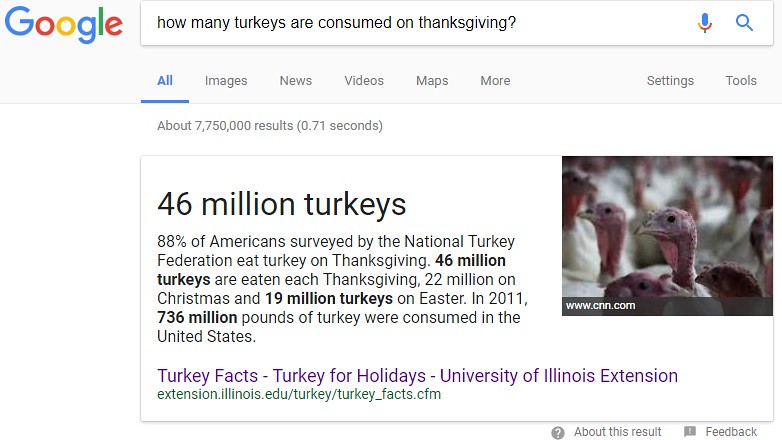

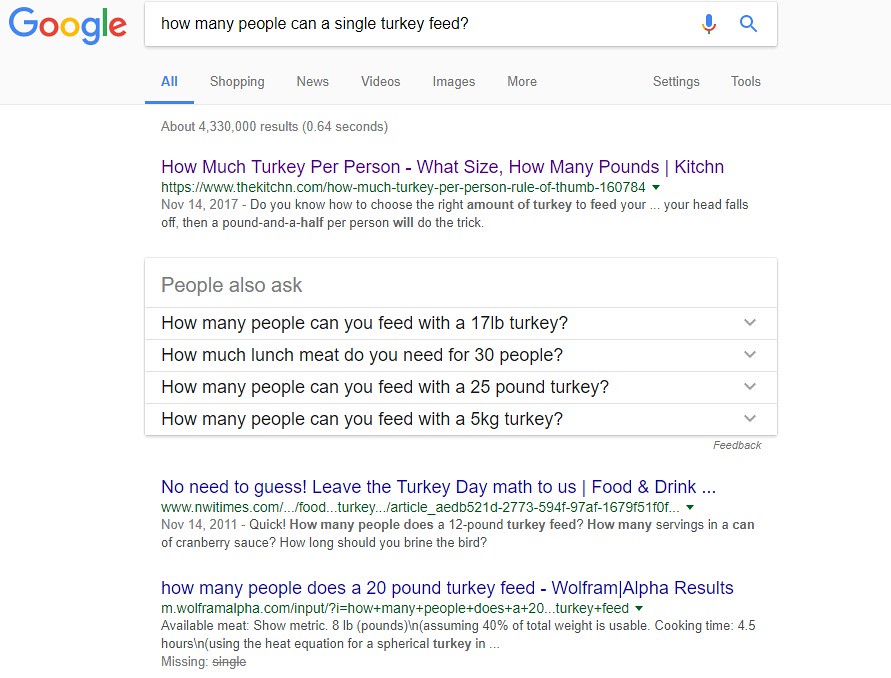
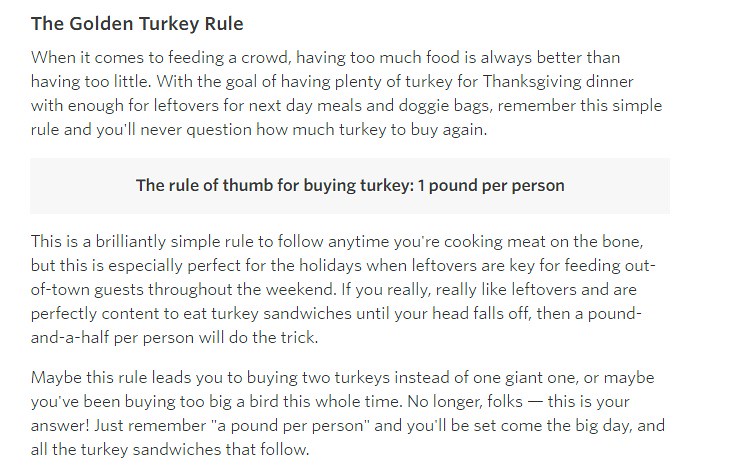

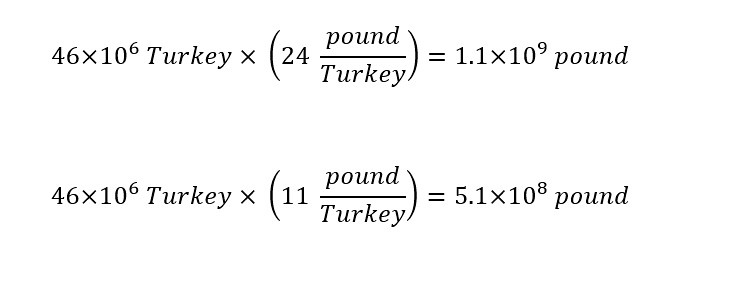

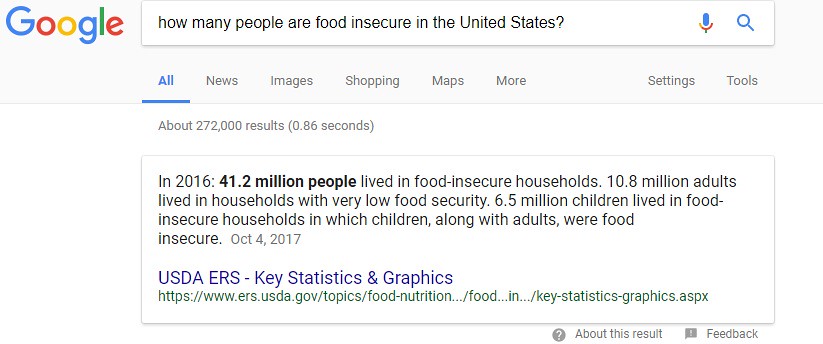

No comments:
Post a Comment